Safari… the word means “a journey” in the Swahili language. Tanzania took the word and perfected the experience. You will truly feel welcome in this great country full of wonderful people and the most authentic wildlife viewing in the world. Karibu!
Few destinations in Africa can compare with Tanzania’s wildlife, the warm smiles of its people, and the diversified and breathtaking landscapes.
Tanzania is the best place in Africa for Big 5 viewing. More than one quarter of the country is under a conservation based government program. Several game reserves like the Selous rank among the biggest in the world.
Tanzania is located on the East Coast of Africa. It is the 13th largest country in the continent. It has incredible wildlife spots like the unique ecosystem of Ngorongoro Crater, the vast savannahs of the Serengeti, the Baobab Kingdom of Tarangire National Park, as well as Lake Manyara, Ruaha National Park, and Selous Game Reserve. Tanzania also has the three largest fresh water bodies in Africa (Lake Victoria, Lake Tanganyika, and Nyasa), the white beaches and coral reefs of the Zanzibar Archipelago, and the magical chimpanzee trekking adventure in the Mahale and Gombe National parks.
Aside from its daunting natural assortment, Tanzania also embraces cultural diversity, with more than 120 different tribes that coexist in harmony. All citizens speak Swahili but each keeps ties to their traditional language and rituals.
Combine a safari adventure with a tropical island for the perfect balance of adventure and relaxation. Tanzania has the unique ability to allow visitors to combine the best wild game viewing, different ecosystems, and variety of camps and lodges within a safe and stable African country. Browse through the information about Tanzania and contact us to help plan your trip of a lifetime.

Tanzania has spectacular wildlife, diverse landscapes and dreamy tropical islands that make it the perfect holiday destination.
From first-timers to experienced advocates, Tanzania has a wide range of safaris and experiences to satisfy your preferences.
The Serengeti is Tanzania’s oldest and most popular national park. It is located in the north of the country and shares its borders with the Ngorongoro Conservation Area in the south and with the Kenyan Masai Mara Game Reserve in the north. It is also a world heritage site and is famed for its annual wildebeest migration, when the hooves pound the open plains, as more than 250,000 Zebra and 300,000 Thomson’s gazelle join the Wildebeest’s trek for fresh grazing. Yet even when the migration is quiet, the Serengeti offers arguably the most scintillating game-viewing in Africa. It is home to the “big five” – lion, elephant, buffalo, rhino and leopard and has hundreds of Elephants, Topi, Hartebeest, Impala and Grant’s gazelle. It is claimed that the Serengeti has the highest population of lions anywhere in Africa. The spectacle of predator versus prey dominates Tanzania’s greatest park. As enduring as the game-viewing is the liberating sense of space that characterizes the Serengeti Plains, stretching across sunburnt savannah to a shimmering golden horizon at the end of the earth.
- Highlights:
- Most famous national park in Africa
- Annual migration of 1.5 million wildebeest and about 250,000 zebra.
- Surface: 14,750 km2 (5,700 sq mi)
- Established: 1951 – became a UNESCO world heritage site in 1981
- Stunningly beautiful landscapes
The Serengeti is a must see for anyone wanting to go on safari. Not only for being home to over three million animals but also because of its different landscapes. To appreciate and comprehend all that the Serengeti has to offer we recommend spending around 3-4 nights. We like to schedule the visit to this park at the end of the itinerary in order to finish your safari experience on a high note.
The Ngorongoro Conservation Area (NCA) is a UNESCO World Heritage Site located 180km/49 miles west of Arusha. The area is named after the spectacular Ngorongoro Crater, one of the world’s largest intact volcanic caldera that went undiscovered until 1892. The crater measures 19.2kn/12 miles in diameter and 304 sq km/ 190sq miles in area. It is one of the flagships of Tanzania’s tourism industry and a must destination when doing the northern circuit safari; breath-taking scenery, an abundance of wildlife and colorful birds.
Imagine driving along the forested flanks of the once upon a time volcano and arriving at its very rim, and instantly admiring a stunning, one of a kind view of the crater 2000 ft below. This gorgeous geologic masterpiece is home to approximately 20,000 free roaming animals and it is also the only place where mankind and wild animals co-exist in harmony. The crater is a dynamic and constantly changing ecosystem. Giraffe, topi, and impalas are absent inside the crater but can be found on the outskirts. While the elephants in the crater are very imposing and will be one of the largest you encounter on your safari.
The walls of this ancient volcanic caldera are covered with dense forest and its floor presents a diverse range of habitats such as open grassland, an area of mature forest, wetlands and a permanent lake.
Game viewing at Ngorongoro Crater is among the very best Africa has to offer. The crater’s rich soils and abundant, constant water grant an ideal habitat for wildlife all year round. Besides the conventional game drives, mountain biking and outstanding walks are offered.
When visiting Tarangire National Park, the third largest park in Tanzania, be ready for a full day of continuous amusement and great sightings. Known for its high density of elephants, phenomenal birds and numerous baobab trees, Tarangire measures 2,850km2/ 1,770 square miles and is only 118 km (75 miles) easy drive southwest of Arusha; it’s a must destination during your Northern Circuit safari.
Sumptuous Baobab trees will welcome you as you enter the park. The park’s topography provides a diverse and picturesque setting with rocky outcrops, open acacia woodlands, seasonal swamps, gentle rolling hills, riverine areas and golden savannah abundantly sprinkled with acacias and the park’s emblem baobabs. There are also eccentrically elevated termite mounds that will catch your eye. And let’s not forget about the perennial Tarangire River that flows through the park’s core and the reason for the incredible wilderness and unbelievable game viewing – especially during the dry season. During this time, herds of up to 300 elephants scratch the dry river bed for underground streams while other huge masses of animals crowd its banks and the shrinking lagoons for its perennial water supply. During the wet season, wildlife disperses further off in search of water. But this season can also be rewarding considering that there will be fewer crowds and the opulent landscape is showered in vivid emerald foliage making it the perfect setting for photography.
Tarangire has different areas that are unique and each has its own secret wonders to reveal. The most prominent and easily visited regions of Tarangire include Lemiyon, Matete, Burungi and Kitibong as well as the Tarangire River itself.
Avian lovers will celebrate an outstanding 550 species of bird life while spotting large raptors and water birds. We bet you that even the non-birding enthusiast will be amazed by the abundance and diversity of birds in the park.
Tarangire is a fantastic park that will hold a special place in your heart and provide you with long lasting memories. No matter what time of year you decide to visit Tarangire, rest assured that you will be glad you did!
Africa is beatified with epic lakes but many people consider Lake Manyara a small gem and the most enchanting of all. Even Ernest Hemingway called this lake “the most beautiful lake in all Africa”. Lake Manyara came to exist as a product of the Great Rift Valley: over millions of years as the rift grew wider, streams descended down its continually eroding slopes and pooled into what is now the famous lake. As it is common to see with lakes formed this way, Lake Manyara has no outlet and is thus subjected to intense evaporation, allowing salt and other minerals to accumulate. You will see diamond-like white deposits of soda around the water’s edge, soapy-like saline water as a result of the concentrated minerals, and deep sapphire waters at its center.
Lake Manyara National Park is only 1.5 hours drive west of Arusha. From the entrance gate, the road curves through a spread of lush jungle that is nurtured by an enduring supply of ground water from the crater highlands directly above the Manyara basin. Through this dense evergreen forest you will spot many strong baboon troops along the roadside, Blue monkeys and Vervet monkeys run with quick light steps between the Mahogany trees, wild date palms and giant fig trees, hornbills honk from the treetops and graceful Bushbuck tread cautiously through the shadows. Further along through the park you will find the grassy floodplains and its extensive views of the lake. This temporary habitat gathers grazing herbivores to feast in the nutrient-rich grasses. There is an elevated boardwalk that is perfect for viewing the hippo and flamingo.
Another distinctive area of the park is the acacia woodlands that offer the best overall wildlife viewing in the park. The border of the park is determined by the escarpment of the Great Rift Valley wall.
The park is well known for the great masses of pink hued flamingoes that gather on the saline waters of the lake, for its unusual tree-climbing lions, huge pods of hippos, and for numerous herds of elephant that roam the park. Iain and Oria Douglas-Hamilton actually conducted a comprehensive research project on these elephants and wrote the book “Among the Elephants”. The park is also ideal for bird watching; the lake is a birder’s heaven with over 380 species that have been recorded. Algae vivaciously flourish in the high saline content of the lake and their growth supports large numbers of fish, making it a feast for huge and colorful flocks of birds that coexist together in the water to feed.
Lake Natron is a mineral-rich soda lake in northern Tanzania. It is fed by the southern Ewaso Nyiro River as well as hot mineral springs. The alkaline water in the lake has a Ph as high as 10.5. The scenery around Lake Natron could be described as isolated, undisturbed, and with lunar-like beauty. Local, fresh springs form startling oases in this landscape. The surrounding volcanic hills are mesmerizing and the landscape is to die for and is one of the main reasons to visit the lake.
Lake Natron sits below Ol Doinyo Lengai (Mountain of God by the Masaai Language), a soaring active volcano in the Rift Valley and the only one to produce black lava. The lake is the most important breeding ground for hundreds of thousands of Lesser flamingos and it is famous for the rumors about its ability to turn animals into stone. This myth is not exactly true, but because of the lake’s unbelievably high alkaline waters, without difficulty it can sear the skin and eyes of animals that are not adapted to such environments. Flamingos, however, are able to overcome the strong alkaline content of the lake, and flock to its shallow waters annually to breed and feed on the lake’s blue-green algae. You may also spot other avian species and the white-lipped tilapia. Food (algae and zooplankton) is abundant and nesting sites are plentiful. Flamingoes feel unthreatened at Natron’s deadly waters since they are the perfect barrier to predators.
For a fantastic adventure you can climb the active volcano and sacred Masaai site: Oldoinyo Lengai. You can also take a walk to the Engero Sero waterfalls. A 20 minute hike up a river gorge. The lake can be visited all year round, but the advantage of the dry season is that is cooler and it’s an excellent time for walking safaris and trekking up to the volcano. The end of the dry season is when the flamingos lay their eggs and in the start of the wet season is when the hatching starts, maxing out by December.
With a surface area of 68,800 sq km (26,600 sq mi), Lake Victoria is the largest lake in Africa, the largest tropical lake in the world, and the planet’s second largest freshwater lake (Lake Superior in North America being the first one).
It is bordered by three countries: Kenia, Tanzania, and Uganda. The Tanzanian side is home to incredible scenery and unbelievable wildlife; it’s not a usual tourist path and provides a unique insight into a remote and lesser explored wilderness area.
The lake is crucial not only for the wildlife species that live in it but also for the survival of all the people who live on its shoreline and who rely on its resources. Fishing is an economically profitable activity for the locals and due to the supply of freshwater irrigation they also farm around the area. The lake is also important since it is the source of the Nile River, it has a prolonged history with colonial explorers, its home to numerous tropical species and it’s an excellent spot for fishing.
Popular attractions in the area are the lakeside cities Musoma and Bukoba and the uncrowded beautiful islands that are ideal for wildlife safaris and have stunning scenery. Ukerewe can be reached from Mwanza and is the lake’s largest island. While you are at Mwanza stop at the Bujura Sukma Museum, a great place to learn about the local Sukuma culture.
Some of the activities to do in Lake Victoria Tanzania include nature walks, fly fishing, daily game drives and bird watching. If you are into fishing, try catching its abundant supply of large Nile perch. Or you can simply sit on the lake’s banks sipping a late afternoon beverage and you can feel the lakeside serenity melting in your body.
If you have an extra day to spare then we would highly recommend visiting the picturesque and often overlooked Arusha National Park, a great introduction to your safari adventure. It is only 20km from Arusha town and it has three diverse topographical features, correlated to the altitude and geology of the area: the inactive volcano of Mount Meru, the Ngurdoto Crater (surrounded by forest and a swampy crater floor) and Momela Lakes.
Mount Meru dominates the park’s horizon and sometimes it’s possible to see the majestic snow-capped peaks of Kilimanjaro (50km or 30 miles away), especially at dusk and dawn that the veil of cloud on the eastern horizon is most likely to clear.
Arusha National Park is unique because is the only park on the northern safari circuit where the Black-and-White Colobus Monkey is easily seen. Its shadowy montane forest is inhabited by inquisitive Blue monkeys and colorful turacos and trogons.
Further north are the grassy hills that enclose the tranquil beauty of the Momela Lakes, which like many in the Rift Valley are alkaline, and their shallows sometimes tinged pink with thousands of flamingos. The lakes support a rich selection of resident, migrant waterfowl and hairy waterbucks display their large lyre-shaped horns on the watery edges.
Other animals you will discover in the park are buffaloes, elephants, zebras, Kirk’s dik-diks and giraffes. Walking safaris are available since there are no lions in the park. You can also hike the Lower Slopes of Mt. Meru or do Canoeing at Momella Lakes
Selous Game Reserve is a protected area in southern Tanzania, covering a total area of 50,000 km2/19,000mi2 making it the largest nature reserve in Africa (four times the size of the Serengeti). Due to its wildlife diversity and undisturbed nature, it was elected a UNESCO World Heritage Site in 1982.
If you have been reading about Tanzania, you might have realized that most of the country showcases untouched Africa, but if you head to the southern parks, you will realize that you are stepping into a considerably wilder world. Due to its difficulty of road access, Selous is a fly-in destination, so to make the most out of your time we recommend combining it with a stay at Ruaha or Katavi. These lesser-visited parks and their incomparable eco-systems attract us with their quintessentially African landscapes. An undisturbed playground of magnificence reserved solely for the enrichment of its plentiful wildlife.
Selous is famous for having one of Africa’s largest populations of elephants (estimated at 30,000 elephants), for its rare kudu and impressive sable antelope, and for being a hotspot for the rare African wild dog. Its massive wilderness area also supports a large number of buffalos, hippos, wildebeest, hartebeest, kudu, sable antelope, eland, reedbuck, bushbuck, zebras, giraffe, and crocodiles. It is home to the Big 5 and all the top predators – lion, cheetah, leopard and spotted hyena. Around 450 birds have been recorded in the park.
Remote, stunning, and filled with wildlife, the star of the Selous is the great Rufiji River. It flows into the Indian Ocean and runs through the Selous dividing it into northern and southern segments and creates a set of interconnected lakes and palm-fringed channels. Boat trips along the Rufiji River, open-top vehicles and walking safaris can be arranged.
Gombe is the smallest of Tanzania’s national parks with 52sq km (20sq miles), an untamed place of lush forests and clear lake views. It is located on the wild shores of Lake Tanganyika on the western border of Tanzania and it is most famous by the pioneering work of Dr. Jane Goodall, an English primatologist and anthropologist who in 1960 spent many years in its forests studying the social and family interactions of wild chimpanzees.
One spine-chilling experience and the highlight to many of Africa’s visitors are the guided walks that take tourists deep into the forest to contemplate and sit with the extraordinary primates for an entire morning. The chimpanzees (who share about 98% of their genes with humans) are habituated to human visitors, probably due to the five decades of study and exposure to humans. You will see mothers skip along the trail with their babies clinging to their bellies, males shouting and quarreling, while other curious individuals take a keen interest in you. Chimpanzee vocalizations are a graded system formed from only 4 different call types: grunts, barks, screams, and hoots. Nonetheless, some 32 different calls have been identified by humans. Like the famous pant-hoot call.
Besides the chimpanzee trekking you will also be able to do hiking, swimming/ snorkeling and visit the site of Henry Stanley’s famous “Dr. Livingstone I presume” at Ujiji near Kigoma.
The park’s main attraction is obviously the chimpanzee families but if you weave your way through the enchanting forests of Gombe you will see other mammals like the beachcomber Olive baboons, Vervet and colobus monkeys, forest pigs and small antelopes, in addition to around 200 tropical bird species.
One of the ideal ways to get to Gombe National Park is through a charter flight from Arusha or Dar es Salaam. We recommend at least 2 days to see the chimpanzees since the park is not like a zoo so there are no guarantees where they’ll be each day.
Katavi National Park is set in a section of the Great Rift Valley, in Southwest Tanzania, east of Lake Tanganyika. It is one of the country’s most remote, quiet and completely untamed areas. Katavi’s startling scenery is as diverse as it is pristine.
During the dry season the floodplains, river and lakes retreat and the shallow, muddy trickle that is left of the Katuma River is the only source of water for the thousands of animals that call the park home. This provides the best opportunity for game viewing since they all converge on the area desperate for a drink. To most, the hippos are the utmost singular wildlife spectacle of the park. Male bloody territorial fights are common as more hippos gather in one place and male rivalry heat up. You will also see some of the biggest herds of buffalo found in Africa, elephants, and grazers such as sable, roan antelopes and eland. There is also an abundance of zebra, giraffe, reedbuck and impala that provide easy pickings for the numerous lions and spotted hyena clans whose territories come together on the floodplains.
On the other hand, during the wet season, roads within the park are often flooded so boat trips along the Katuma River are one of the best ways to view wildlife in Katavi. Dense concentrations of crocodiles, hippos and myriad water birds also gather at the seasonal lakes Chada and Katavi.
Katavi is a true isolated, untrammeled and infrequently visited wilderness that offers the few intrepid souls who make it there a thrilling taste of Africa as if it must have been a century ago. Charter flights from Dar es Salaam or Arusha are the best option to get there.
Mahale Mountains National Park is located on the far west of Tanzania, on the shores of Lake Tanganyika. Covering an immense 1613 km2 of pristine untamed wilderness, the park is the best location for chimpanzee experiences. The animal interaction in the park is at its finest and is very different from anything else Tanzania has to offer.
The main activity in the park is the guided excursions into the forest searching for chimps. Learn about the chimps social interactions, grooming, feeding, and playing conducts. The walk could be just a short hike or a grand mountain trek through the slopes; it all depends on the chimps’ location. There around 10 family groups of chimps totaling around 800-1000 chimps. Some of these family groups have become habituated to the presence of humans due to the Japanese research project founded in the 1960s where they stayed in the chimp’s habitat to learn about their behaviors. On your walking safari you will also find a diverse forest flora and fauna consisting of troops of Angola and red Colobus, Red-tailed and Blue monkeys, a prismatic array of colorful forest birds, alpine bamboo, and montane rain forest.
Other activities consist of swimming, snorkeling, fishing, cruising along Lake Tanganyika, and many sport activities. Afterwards relax on the intact white beaches along the shores of the lake and admire the beautiful sunset on the lake’s horizon. Or if you feel more adventurous, you can hike to the Park’s highest point called “Nkungwe” (2450mt or 8,069ft) held sacred by the local Tongwe people.
For those looking for exclusivity and luxury, we will organize your flight to the shores of Lake Tanganyika and then a short boat ride to your select camp, an upscale hideaway tucked along the shore.
Ruaha National Park is Tanzania’s second largest park (20,000km²/12,400mi2) and is located in Central Tanzania. It is one of the least explored parks in East Africa providing you with the opportunity to discover an untouched and remote slice of wilderness. The park is serene and detached from the usual tourist track. This is one of Ruaha’s benefits and a great reason to visit this hidden gem: you will feel that you have the whole park to yourself.
The park’s spirited ecosystem is one quite undocumented. On your safari you will get a chance to pursuit lion, leopard, cheetah, the highly endangered African wild dog, large numbers of elephant and other big game through the unspoiled stretches of the park. You will find the greatest concentration of Lesser and Greater kudus of any East African park, huge populations of elephant and buffalo. The park is also home to around 570 species of birds. The main geographical attraction of the park is the Ruaha River, which draws wildlife (especially during the dry season) and is a favorite for hippos and crocodile. Impala, Waterbuck and other Antelopes risk their life for a sip of life satisfying water. Throughout the park you will see full grown miombo forests, open plains and rolling hills that blend with massive baobabs trees.
Even though game drives through the rugged, semi-arid bush park are the main form of game viewing, day walks or hiking safaris are available from some camps. Another thing to do is visit the Stone-age ruins at Isimila, one of Africa’s most significant historical sites.
Ruaha National Park can easily be combined with the Selous National Park on a Southern Circuit safari. A journey to this gorgeous part of the country blends unforgettable scenery with large wildlife herds for a truly unique experience of the African wilds.
Located on the northeast coast of Tanzania, this noteworthy park is a great one-day stop on your southern circuit safari. Saadani, covers an area of just 1,110 km2/ 690mi2. The boundaries of the park are the Wami River in the south, the Milgazi River in the north, and the Moshi railway line in the west. Whilst the game viewing here is not as abundant as in other Tanzanian parks, Saadani has a magical atmosphere and you will be able to combine beach and game drives in one destination. It is the only wildlife sanctuary in east Africa to have the privilege of an Indian Ocean beachfront.
In addition, you will have the opportunity for bush walks and river safaris. One of the main attractions is a boat safari on the Wami River, where you will encounter strong hippos and large crocodile populations lying on the sandbanks. There is also Madete beach where there is a green turtle nesting site and occasionally the early risers are rewarded with an utmost photographic opportunity: playful elephants on the beach and in the surf. For bird lovers, Saadani is splendid; it has coastal, riverine, grassland and woodland species in abundance.
For a cultural tour, visit Saadani fishing village within the reserve, where a collection of ruins display tribute to its 19th century prime days as a major trading port.
Today, four of the ‘Big Five’ are present (there is no rhino here) and there is a surprisingly wide range of grazers and primates seen throughout the park. Herds of up to 30 elephants sightings are now commonplace and the lion population is increasing. Leopard, Spotted hyena and Black-backed jackal are also found.
Zanzibar Island is located in the Indian Ocean about 40km/25 miles off the coast of Tanzania, it’s the perfect spot to relax and wrap up an incredible safari vacation. The beauty of Zanzibar is that it blends Swahili and Arabian influence, centuries of sea-trading history, and idyllic beach vacations. There will be always something in store from you. You can indulge in relaxation and soak up the sun in the pristine white-sand beaches of your resort, go swim in its clear turquoise-blue water, and/or take on many of the activities offered on the island:
- Explore the UNESCO World Heritage Site of Stone Town, Zanzibar City’s old quarter and once a major trading hub. You will get to spend a colorful day around the town’s buzzing marketplace, walk on its brilliantly tangled streets, admire its old story-telling buildings with distinctive doors, and learn about the eventful historical sites from the century-old slave and spice trades. With 1,200 years of living history, the streets are packed with a rich architectural legacy and charming secrets: colorful Indian temples, grand Persian baths, Forodhani Gardens, magnificent Sultan’s palaces, the Old Arab Fort, fragrant chai vendors, rundown Portuguese cathedrals and fort on the beach front, and the welcoming smiles of the Zanzibari people.
- Go snorkeling and scuba diving in the clear blue Indian Ocean.
- Enjoy one of the many fun water sport activities such as jet skiing, kiting, parasailing, kayaking, catamaran sailing, deep sea fishing, wind surfing, and water skiing.
- Explore the Spice plantations where your senses will be overwhelmed with the fresh cloves, nutmeg, cinnamon, cardamom, pepper, and intense Arab coffee.
- Make your way inland and visit the Jozani Forest. A unique attraction that involves numerous walking trails, lush vegetation and wonderful wildlife.
- Get a chance to watch the bottlenose dolphin at Kizimkazi located on the southwestern end of the island.
- Proceed along to the East Coast and visit Chwaka Bay, a picture-postcard splendor!
Zanzibar counts with the Zanzibar airport located on the outskirts of Zanzibar City. National and international airlines provide flights to Zanzibar and connect the island to the rest of the world.
Mafia Island is approximately 120km/ 75 mi south of Dar es Salaam and 20km/12mi off Tanzania’s coastline. A number of smaller uninhabited islands and islets are scattered around the island. They are almost the same way they were when they were first discovered with exceptional biodiversity of aquatic life and wild beaches cluttered with floral fragments and dominated by mangrove forests with spiky roots that poke through the sand. Breathtaking raw vista is exactly the wilderness that provides Mafia Island with the protection from densely packed beaches.
Most of the island’s residents are generally indifferent to the geopolitical squabbling on the continent. Their freedom from industrial development and their sedentary pace set the rhythm of the island. You will be moved by their friendly character and welcoming smiles. Mafia Island has a reasonable size to explore with about 48km/ 30mi long and 17km/ 10mi wide at its widest point. On its eastern and southern shore lies the Mafia Island Marine Park, the largest in East Africa. The warm, sheltered waters of the horseshoe-shaped bay embraces a diversified ecosystem including coral reefs, sea grass beds, mangroves and inter-tidal flats. There are over 450 species of fish and 48 types of coral in an underwater paradise ready for exploration. In addition, two species of sea turtle use the island’s beaches as nesting grounds. This reef runs from Kifinge (Forbes Bay) on the north to Tutia in the south.
Mafia Island and its chain of small islands hosts an outstanding mosaic of tropical marine habitats and some of the richest reefs in the world making it an excellent world-class diving and snorkeling destination. Chloe Bay is one of the best spots, its depth varies from 5-27mts and you can dive all year round. You will enter a realm of soundless tranquility full of animal diversity.
Even thou it is smaller than Zanzibar, this island paradise still has a lot to offer and it’s a better alternative for those looking for a quieter gateway with an off-the-beaten-track appeal. You can spend your time on Mafia as dynamic or as relaxing as you desire. Besides diving and snorkeling, other activities worth undertaking are fishing, dhow trips, observe the dhow-building industry, guided walks through Mlola Forest, enjoy a picnic on a banana plantation, swim with whale sharks, visit the stone ruins of Chole Mjini and Juani Islands, or view the Fruit bats and crab plovers of Popo Park migrating in November.
Located on the warm waters of the Indian Ocean the sometimes forgotten Pemba Island is a place of genuine barefoot luxury that doesn’t disappoint. It is the northernmost island on the Zanzibar Archipelago, and it is smaller, hillier and greener than its well-known neighbor: Zanzibar. This heavenly tropical escape is relatively undiscovered and certainly a quieter option for those travelers that find Zanzibar too crowded.
Accommodation on the island is limited, but these extraordinary lodges set off the tourist track provide a blend of romance and seclusion; you will have the private white sand beaches practically all to yourself. The island’s beaches are not as pristine white as those in Zanzibar but tours to its surrounding islands certainly make up for this.
Pemba’s landscape consists of an irregularly shaped coastline and dense mangrove forests ruled by deep valleys that gradually slope into the sea. The tropical hills and inland forests on Pemba’s island are remarkable and will make you feel you are in a castaway island or Robinson Crusoe novel. Don’t miss out on Pemba’s Ngezi Forest in the north, a protected lush rain forest and home to an endemic species of bats, known as the Pemba flying fox. Pemba is also known as the clove island of the Indian Ocean due to its four million clove trees. But the main reason to visit Pemba is diving. The island’s surrounding beautiful lagoons (Fundu Lagoon especially) and remarkable coral reefs hold some of the best dive spots in Tanzania. If diving is not for you, snorkeling and deep sea fishing are another water based pursuit to enjoy.
Another gem is Misali Island, just off the western shore of Pemba, world-famous for its beautiful corals and beaches. There is a conservation area that is a breeding site for green and hawksbill turtles.
In Pemba, villages are immersed in culture and traditions that preserve the Swahili way of life. You will find a quiet and easy-going atmosphere among its relaxed and friendly people almost oblivious to the world around them.
The island has also recently opened Africa’s first underwater hotel room at the Manta Resort on Pemba Island. Contact us to make this paradisiac island part of your itinerary.
Arusha is a small bustling town on the upper northeast of Tanzania and it’s a great base for the stellar northern circuit safaris or Kilimanjaro and Mt. Meru climbs. It is marked by a monumental clock tower representing the middle of the Old British Empire and locals will greet you warmly with the Swahili word “Karibu” which means “Welcome.”
The town lies in the heart of charming coffee plantations and fertile agricultural lands surrounding Mount Meru. Up in the hills you will see numerous flower farms and crystal clear streams that descent from the mountain tops.
Arusha has two near-by airports: Arusha Airport just 9 km away and Kilimanjaro International Airport 50km away. Trailblazer Safaris usually uses Arusha as an overnight stop to provide relief after a long plane journey or at the end of a safari. Beneath its chaotic, dusty exterior, you will find that it provides many reasons to explore this city.
Arusha’s population embraces more than 100 nationalities. Muslim and Christian communities coexist peacefully. The Maasai culture is prominent in the area. You will notice them in their bold red garments. There are also Iraqw, Hadzabe, Swahili, Wa-arusha and dozens of other indigenous and ethnic cultures. They will be riding bicycles, herding cattle, selling artwork and going about their daily life. You will also notice small thatched huts with children flying in and out in school uniform and numerous roadsides stalls where women sell bright green bananas and roast cassava.
Dar es Salaam is the largest and most influential city in Tanzania and its former capital. It’s the country’s central hub, and has many of Tanzania’s metropolitan attractions. The city offers streets that are filled with shops, markets, and restaurants and has a seaport that provides fantastic views over the Indian Ocean. It is Tanzania’s most prominent city in arts, fashion, media, music, film and television and a leading financial center. Located on a natural harbor on the Swahili coast, the city is a vibrant East African city that includes lots of excitement, sandy beaches and plenty of character.
The city has a tropical wet and dry climate. It stays hot and humid throughout the year, with rainfall a possibility even during the dry seasons. Afternoon downpours are heavy but brief. Due to close proximity to the equator and the warm Indian Ocean, the city experiences tropical climatic conditions, typified by hot and humid weather throughout much of the year. Even in the hottest months (December to March), the humidity is offset by cooling ocean breezes, making the coast the most pleasant place to be at this time.
A lot of times Dar es Salaam is used as a stopover destination since Dar es Salaam International Airport is the gateway to many destinations around the country as well as the stunning beaches like those of Zanzibar Island.
Rising into the clouds at an altitude of 5,895mt (19,341ft) you can marvel at the captivating icon of Mount Kilimanjaro bursting with majestic personality. It is Africa’s highest peak but its imperiousness and enormity are only a hint of the great mountain’s value.
The mountain is situated on the fittingly named Kilimanjaro National Park, established in 1977. While the mountain is the main attraction, the national park and lower slopes have a lot to offer as well. Rising in altitude, the farmland gives way to a lush rainforest swarming with life, with the chance to see buffalo, monkey, elephant and even leopard. The rainforest dwindle into alpine meadows before culminating in the rugged, barren landscape leading to the summits.
The best view of the mountain is from Kenya’s Amboseli National Park. But if you are going on Tanzania’s northern safari circuit you will get a chance to see the still-glaciated, often snow-dusted Mt. Kilimanjaro from many places. Or if you feel adventurous and you want to fully appreciate this ancient volcano our team can organize a climb to the top of this imposing mountain. There a number of different routes to reach the summit (Uhuru Peak) and they all vary in difficulty and some are more transited than others. Contact us for more information on each route.

All trips WILL be customized to fit YOUR needs.
HIGHLIGHTS OF THE NORTHERN CIRCUIT
Duration: 5 Days
Countries: Tanzania
Cost per person sharing starts at: $ 2,895
Minimum number of people: 2
Everyone wants to know what a safari costs and what their budget will be.
This price point is where to start your adventure. Please note we are not a volume based company and we put a large amount of resources and planning behind every individual safari.
We do not mix groups, we use the best equipment and accommodation available and we custom design each safari.
DAY 1: TARANGIRE
Today you will leave Arusha after breakfast and drive to Tarangire National Park to begin your safari experience. You will enjoy a phenomenal game drive during the day, including a picnic lunch.
DAY 2 – 3: SERENGETI
Enjoy a great breakfast and pack up to head to Serengeti National Park. Enjoy an afternoon game drive before going back to your lodge.
On the following day you will experience morning and afternoon game drives searching for more game animals focusing on the elusive cats like leopards, cheetahs, lions and other wildlife.
DAY 4: NGORONGORO & MAASAI VISIT
Morning game drive in the Serengeti before heading to Ngorongoro National Park. On the way you will meet with members of the Maasai Tribe for an unforgettable experience.
The Maasai tribe is a unique and popular African tribe known for their long preserved culture and nomadic lifestyle.
After a long day afield you will arrive at your lodge where you will be welcomed home, relax and enjoy dinner.
DAY 5: NGORONGORO CRATER
Early morning game drive to the Ngorongoro Crater for a visual feast of wildlife and an incredible landscape.
After the game drive start your drive back to Arusha for final drop off.
THE HEMINGWAY TRACK SAFARI
Duration: 11 Days
Countries: Tanzania
Cost per person sharing starts at: $ 4,925
Minimum number of people: 2
Everyone wants to know what a safari costs and what their budget will be.
This price point is where to start your adventure. Please note we are not a volume based company and we put a large amount of resources and planning behind every individual safari.
We do not mix groups, we use the best equipment and accommodation available and we custom design each safari.
DAY 1: ARRIVAL DAY
Clients will be picked up from Kilimanjaro (JRO) airport and taken to Arusha via private road transfer.
DAY 2: ARUSHA NATIONAL PARK
After breakfast you will visit Arusha National Park, a great place to start the adventure. Game drive throughout the day with picnic lunch at the park. Here you will also get the chance to experience a walking safari guided by a professional ranger.
DAY 3: TARANGIRE & MAASAI VISIT
Today you will leave Arusha after breakfast and drive to Tarangire National Park to begin your safari experience. You will enjoy a phenomenal game drive during the day, including a picnic lunch. Following the game drive you will meet with members of the Maasai Tribe for an unforgettable experience. The Maasai tribe is a unique and popular African tribe known for their long preserved culture and nomadic lifestyle.
DAY 4: LAKE MANYARA
Full day of game drives through Lake Manyara National Park.
DAY 5 – 6: NGORONGORO CRATER & OLDUVAI GORGE
Enjoy a great breakfast and pack up to head to the Ngorongoro Crater. The entire day is a visual feast of wildlife and flora that differs from location to location. Overnight at a lodge on the rim of the crater.
The following day, on the way to the Serengeti National Park you will visit the Olduvai Gorge Museum. After a long day afield you will arrive at your lodge where you will be welcomed home, relax and enjoy dinner.
DAY 7 – 8: SERENGETI
You will experience morning and afternoon game drive in the Central Serengeti searching for more game animals focusing on the elusive cats like leopards, cheetahs, lions and other wildlife.
DAY 9: SERENGETI TO LAKE NATRON
You will start the day with an early breakfast and begin the drive to Lake Natron. Be ready for a long but rewarding drive. Stops can be made along the way to take in scenery and wildlife, where you will experience sensory overload. Once you are settled in your camp you will have a short walk to the shores of Lake Natron to look at the beautiful pink flamingoes.
DAY 10: LAKE NATRON
After breakfast you will drive 15 minutes to Ol Doinyo Lengay where you will hike to the unique falls that flow over craggy rocks into a natural pool.
Then drive to Arusha for an overnight before your flight back home.
DAY 11: CULTURAL HERITAGE MUSEUM & RETURN HOME
You will visit the Cultural Heritage Museum to buy any souvenir or painting you want to take home.
Lastly, you will be taken via private transfer to JRO international airport to catch your return flight.
CLASSIC SOUTHERN CIRCUIT
Duration: 6 days
Countries: Tanzania
Cost per person sharing starts at: $ 5,260 (low season rates)
Minimum number of people: 2
Everyone wants to know what a safari costs and what their budget will be.
This price point is where to start your adventure. Please note we are not a volume based company and we put a large amount of resources and planning behind every individual safari.
We do not mix groups, we use the best equipment and accommodation available and we custom design each safari.
DAY 1 – 2: RUAHA
Fly from Dar es Salaam to Ruaha and after your transfer to the lodge enjoy an afternoon game drive.
The next day experience morning and afternoon safari activities
DAY 3 – 5: SELOUS
Fly from Ruaha to Kiba Airstrip in the Selous. You will be picked up by your guide and driven to Sand Rivers, set on the banks of the Rufiji River where the whole atmosphere in the Selous is different.
Your time at the Selous reserve is your own. You can pick between 4×4 game drives, boating, and walking safaris throughout the day. But you can also choose to stay in and relax or enjoy other extra activities the lodge offers, like fly fishing.
DAY 6: RETURN HOME
Fly from Selous to Dar es Salaam for your return home or your next adventure.
SOUTHERN TANZANIA AND BEACH ESCAPE
Duration: 12 Days
Countries: Tanzania
Cost per person sharing starts at: $ 6,475 (low season rates)
Minimum number of people: 2
Everyone wants to know what a safari costs and what their budget will be.
This price point is where to start your adventure. Please note we are not a volume based company and we put a large amount of resources and planning behind every individual safari.
We do not mix groups, we use the best equipment and accommodation available and we custom design each safari.
DAY 1 – 3: RUAHA
Fly from Dar es Salaam to Ruaha and after your transfer to the lodge enjoy an afternoon game drive.
The next days experience morning and afternoon safari activities
DAY 4 – 7: SELOUS
Fly from Ruaha to Kiba Airstrip in the Selous. You will be picked up by your guide and driven to Sand Rivers, set on the banks of the Rufiji River where the whole atmosphere in the Selous is different.
Your time at the Selous reserve is your own. You can pick between 4×4 game drives, boating, and walking safaris throughout the day. But you can also choose to stay in and relax or enjoy other extra activities the lodge offers, like fly fishing.
DAY 8 – 11: ZANZIBAR
Transfer by light aircraft from Selous to Zanzibar (via Dar es Salaam).
Upon arrival in Zanzibar you will be taken via private transfer to your resort.
One of the days you will start early with a tour of Stone Town & Prison Island.
The rest of the time enjoy the leisure days at this paradisiac island. Relax at the beach, get a massage at the hotel, or take on one of the many extra activities available.
DAY 12: RETURN HOME
Flight back or take a ferry to Dar es Salaam for your return back home.
EPIC FLY-IN SAFARI
Duration: 10 Days
Countries: Tanzania
Choose between a 5 day Gombe or Katavi Chimpanzee trekking adventure before going to your Serengeti National Park experience.
Cost per person sharing starts at: $ 8,875 (low season rates)
Minimum number of people: 2
Everyone wants to know what a safari costs and what their budget will be.
This price point is where to start your adventure. Please note we are not a volume based company and we put a large amount of resources and planning behind every individual safari.
We do not mix groups, we use the best equipment and accommodation available and we custom design each safari.
DAY 1: KIGOMA
Flight from Arusha to Kigoma.
DAY 2: GOMBE NATIONAL PARK or MAHALE NATIONAL PARK
Take a boat transfer to either Gombe Stream National Park or Mahale Mountains National Park. After lunch at the Lodge enjoy the afternoon free to soak in the serenity, relax by the pool, or take a guided forest walk.
DAY 3: CHIMPANZEE TREKKING
Go on a morning Chimpanzee trekking and boat safari. Return to the Lodge and afternoon at Leisure
DAY 4: CHIMPANZEE TREKKING
Begin your morning with a journey into the jungle home of the chimpanzees of the park. Return to the Lodge for Lunch. Afternoon at Leisure. Options of extra activities like Fishing, Kayaking or Snorkeling
DAY 5: KIGOMA
Return by boat to Kigoma. After arriving you’ll have the afternoon to relax on the shores of Lake Tanganyika.
DAY 6 – 9: SERENGETI
Head to Kigoma Airport for your shared charter flight to Serengeti where one of our guides will greet you and transport you to your lodge.
The following days you will experience morning and afternoon game drive in the Central Serengeti searching for more game animals focusing on the elusive cats like leopards, cheetahs, lions and other wildlife.
DAY 10: RETURN HOME
Morning flight from SERENGETI- ARUSHA for your return flight home.
MULTI-COUNTRY EXPERIENCE: GORILLAS, SERENGETI AND BEACH.
Duration: 11 Days
Countries: Uganda, Tanzania
Cost per person sharing starts at: $ 6,980
Minimum number of people: 2
Everyone wants to know what a safari costs and what their budget will be.
This price point is where to start your adventure. Please note we are not a volume based company and we put a large amount of resources and planning behind every individual safari.
We do not mix groups, we use the best equipment and accommodation available and we custom design each safari.
DAY 1: BWINDI
Fly to Kihihi Airstrip. Leisure day and overnight stay at a lodge in Bwindi Impenetrable National Park.
DAY 2: GORILLA TREKKING
Wake up early and transfer to the headquarters of the gorilla national park. You will then transfer to the trekking starting point and follow various trails in the forest in search of the gorillas.
This may take you between 2-6 hours but the experience is surely memorable. On reaching the gorillas, you will spend an hour observing their behaviors and taking photographs after which you will descend back to the lodge forest.
DAY 3: LEISURE DAY
Leisure day or optional cultural encounters and activities: Batwa Cultural Experience, Buhoma Community Walk, 1/2 day Nature walk.
DAY 4 – 7: SERENGETI
Fly from Bwindi to Serengeti (stopping at Entebbe). The following days you will experience morning and afternoon game drive in the Central Serengeti searching for more game animals focusing on the elusive cats like leopards, cheetahs, lions and other wildlife.
DAY 8 – 10: ZANZIBAR
Transfer by light aircraft from Serengeti to Zanzibar.
Upon arrival in Zanzibar you will be taken via private transfer to your resort.
One of the days you will start early with a tour of Stone Town & Prison Island.
The rest of the time enjoy the leisure days at this paradisiac island. Relax at the beach, get a massage at the hotel, or take on one of the many extra activities available.
DAY 11: RETURN HOME

Tanzania is a country full of surprises and world-famous attractions. You will collect memorable moments that will stick with you for life. Read through some of our favorite experiences to enhance your safari vacation.
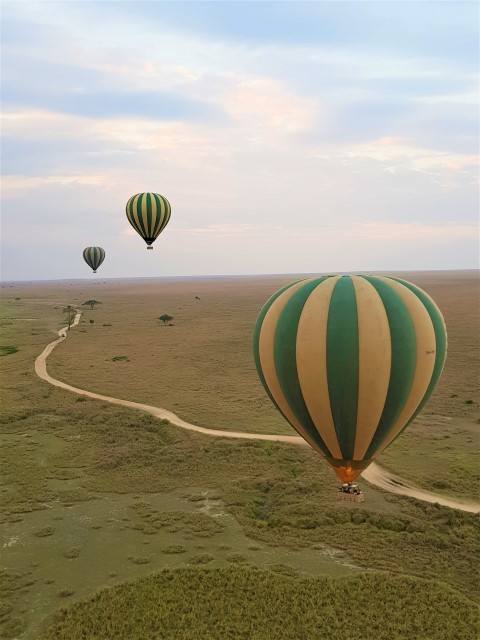
Balloon Safari
A Serengeti hot air balloon safari is an opportunity of a lifetime. It is a fantastic experience, particularly suitable for a bird’s eye-view game viewing experience wildlife tour. Enjoy a memorable morning in a hot air balloon over the Serengeti as the sun rises and spreads liquid gold over the beautiful plains. It’s an invigorating feeling, dreamy, as you become feather-light and soar above the wildlife spectacle beneath you.
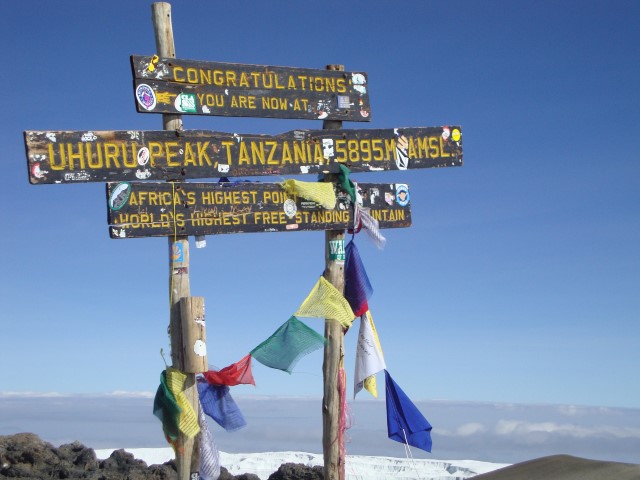
Trekking / Climbing
Combine sports and leisure in one vacation. Before your safari through the national parks, climb Mt. Kilimanjaro (the highest mountain in Africa), Mt. Meru, or the old active volcano Ol Doinyo Lengai to add to your portfolio of high altitude peaks climbed. We will provide expert guides, quality standards and always focus on safety. Contact us for details about the different routes, best time to climb, and prices.
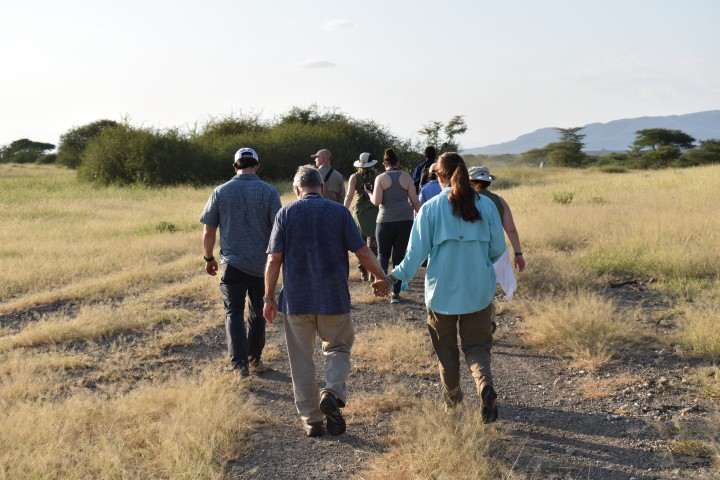
Walking Safaris
Safari translates to journey in Swahili. A safari is more than just watching wildlife, it’s a way to feel, smell, and hear Tanzania. In a walking safari you are not just an observer but a participant in the world of wildlife. You will be able to get up close and personal with wildlife, appreciate the smaller flora and fauna that sometimes goes undetected from a vehicle. It is the most authentic and unbeatable safari experience.
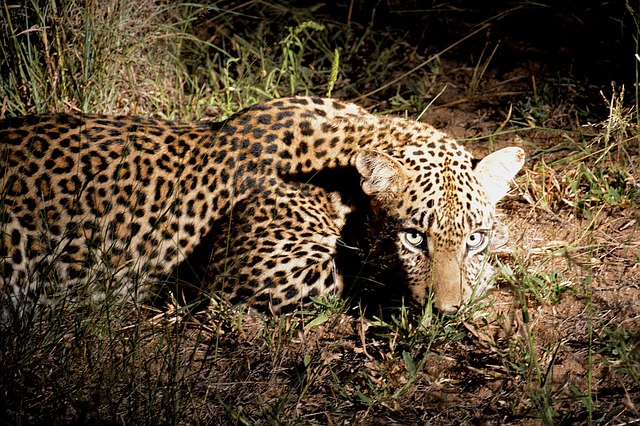
Night Drive Safari
What makes night drives so special is that after dusk the bush is a completely different world. The introverted species that don’t want to be seen during the day come out of their hiding places. Predators are more active at night, giving you the chance to spot a pride of lions or a leopard positioning themselves for a hunt. The hippos come out to feed, the bush babies jump through the trees, and the cats patrol their territory… night time is a totally different game on the savannah!
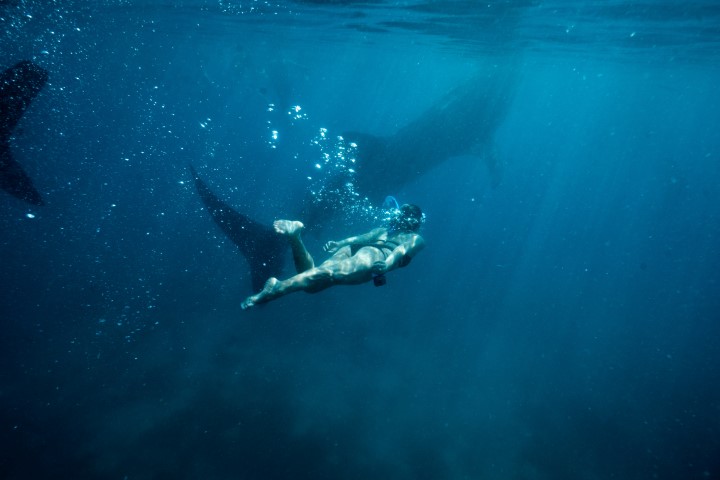
Diving and Whale Shark Sighting
Tanzania has excellent underwater visibility, a treasure of untouched coral reefs and marine life. It has a constant water temperature of about 25°C (77 F) throughout the year, making it an ideal place for diving! The Zanzibar Archipelago is the main scuba diving destination in Tanzania and there is something original and exhilarating for every diver.
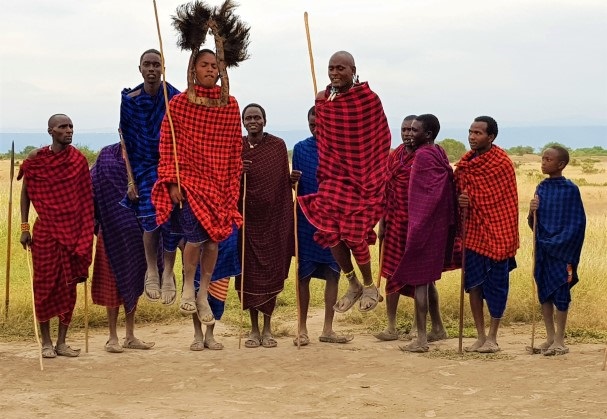
Tribe visits
On our tribal visits you will have the chance to immerse yourself in their native culture and see their way of life. The visits last a few hours, making them easily incorporated into your safari plan. Some of the most influential tribes that you are most likely come into contact throughout your voyage in Tanzania are the Maasai, Hadzabe, Datoga, Iraqw, and Mto wa Mbu.
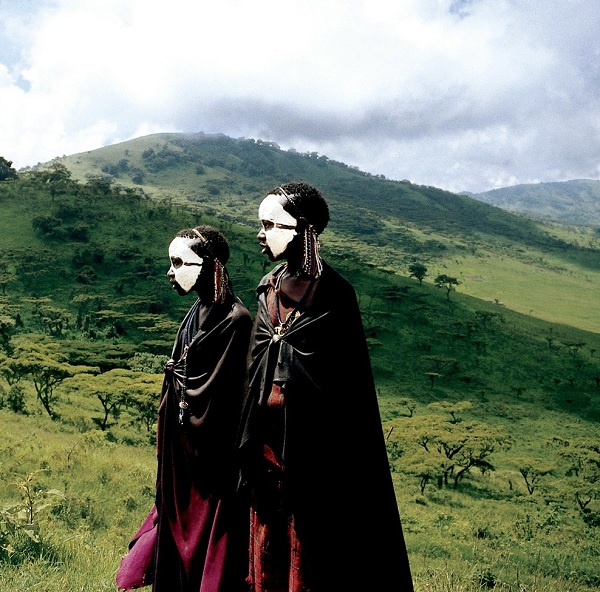
Cultural visits
Tanzania is privileged with a number of renowned historical and pre-historic sites dating as far back as 2 million years ago. Among those are Olduvai Gorge (known as “The Cradle of Humankind”), Kondoa Rock Paintings of Kolo, the ruins of Kilwa Kisiwani and Ruins of Songo Mnara (which depict early Swahili civilization), the Stone Town of Zanzibar, and Bagamoyo.
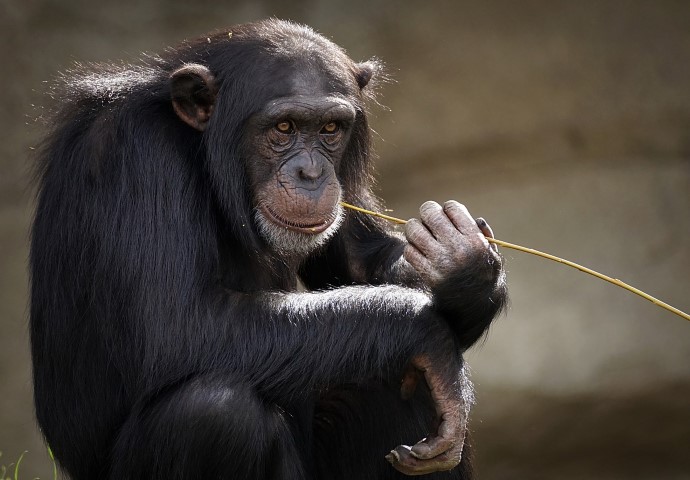
Chimpanzee trekking
Get up close and personal with humans’ closest comrades in the western forests of Tanzania. Step into their world and get a special insight into their life. These primates live in communities of 30 to 80 individuals and sometimes split up into smaller groups to avoid competition for resources. They are highly social and call to each other across the forest making them easy to locate.

For further information please contact us. We will make sure your holiday is unforgettable!

January: start of the ‘short dry season’. Hot month. Migration found in the Serengeti. Place green lush scenery and solitude over wildlife abundance.
February: hottest month and still relatively dry. Calving season for migrating herds. Both birding and wildlife viewing tend to be excellent during this month.
March: the start of the main and long wet season. Still good for spotting the migration.
April: the rainiest month of the year and with high humidity levels.
May: still very rainy month; expect afternoon downpours.
June: the beginning of the long dry season; weather is usually sunny with clear skies. Wildebeest herds stop at Grumeti River to build up numbers before they attempt the river crossing in their thousands.
July: cool weather and the landscape is beautiful green and lush; one of the best months to visit Tanzania. Migration river crossings.
August: beautiful warm days with cooler mornings and nights. Little to no rain.
September: dry and gorgeous weather, alike July and August.
October: warm and clear days, possible rains at the end of the month.
November: start of the ‘short rainy season’.
December: the second month of the short rains, temperatures gradually rise. Migration herds grazing in the Serengeti.

Tanzania has become one of Africa’s classic safari destinations. The accommodation options throughout the country reflect the trend of Tanzania’s growing and developing tourism industry: remote mobile camps, tented camps, budget friendly lodges, hotels, and luxury safari lodges all available to ensure everyone can get a taste of this captivating and diverse country.
Also available are private game reserves set near national parks where you will feel the exclusivity and privacy of these wilderness locations and enjoy night game drives and walking safaris without any other vehicle around.

Please complete the contact form and we’ll get in touch with you as soon as possible.
